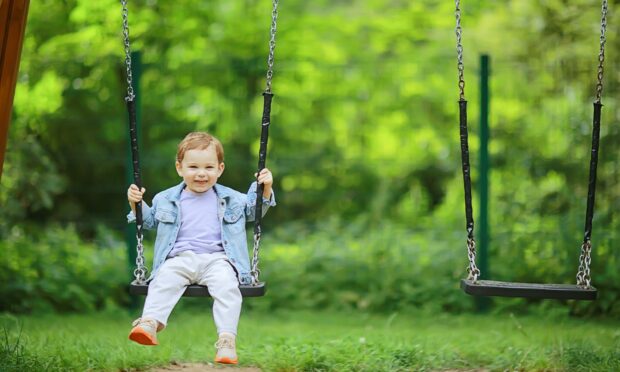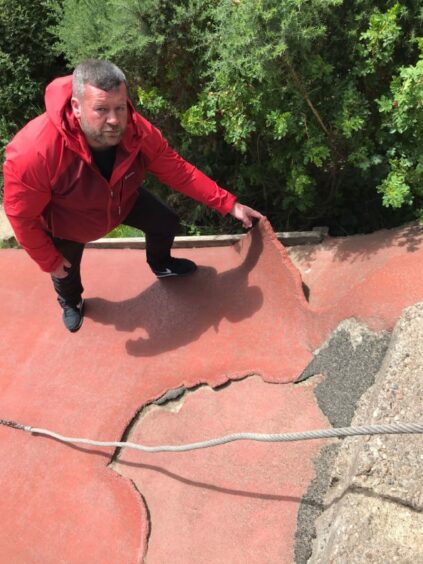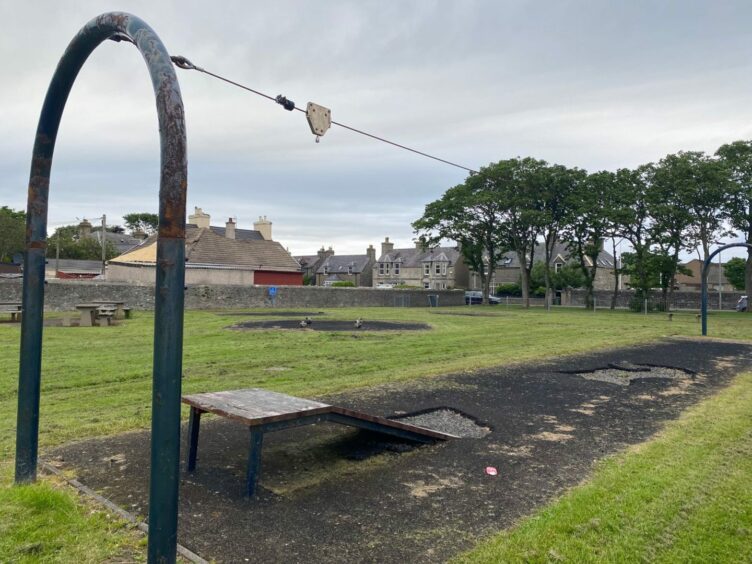Highland councillors will next week discuss a strategy to bring the region’s 321 play parks up to scratch.
But with a huge repair bill and a paltry level of investment, do they have any hope of delivering for Highland children?
The numbers make for sobering reading.
Highland Council has no capital budget at all for play parks. The council is required by law to maintain them, but has no statutory duty to provide them in the first place.
So when the capital budget has to cover a massive school estate and crumbling roads, play parks often pay the price.
As a result, over the years, Highland Council has run up a sizeable backlog of repairs and maintenance. Incredibly, there are 321 play parks across Highland – including 93 in Inverness (eight of which are soon to close).
Together, they have 2,500 pieces of play equipment.
However, without continued investment, many parks have fallen into disrepair.
Highland Council estimates the repairs bill for 2022-23 at £3.5 million.
What’s happening with Scottish Government cash?
The Scottish Government made a manifesto commitment to ensure all children can access play in their own community.
To fund that, they’ve pledged to invest £60m in this period of parliament.
Sounds great, but the money doesn’t go far once it’s divvied up.
Last year, Highland Council received its share, which amounted to £234,000.
A relatively modest sum, and the council ran out of time to spend the money, so £232,000 of it is carried forward into this financial year.
In 2022-23, Highland Council expects to receive a further £245,000.
If that sounds dismal, there is some potential light in the tunnel. Later this year, the Scottish Government says it will present plans for a multi-year settlement for councils.
This will allow local authorities to get ahead a bit, and plan how they will spend what resources they do have.
What are Highland Council’s plans?
Highland Council has adopted a place-based approach to its play parks. This means it’s effectively devolved the decisions to area committees, on the basis that each community will know best how to spend the cash.
In the last couple of years, area committees have undertaken a review of what they already have, and what they hope to deliver.
Some areas have already decided to reduce the number of play parks, focusing on quality over quantity.
Inverness can expect to drop from 93 parks to 85.
Other areas are looking to consolidate their play parks. Badenoch and Strathspey are shutting three, taking their total to 20.
Meanwhile, area committees in Lochaber, Skye and Raasay, Dingwall and Seaforth and Easter Ross have each agreed to close down one play park.
Of course, the council’s £234,000 share of national funds doesn’t go far. To top it up, many area committees decided to use unspent Covid relief and place-based funding on Highland play parks.
Last year, they invested nearly £80,000 of Covid money and just short of £700,000 place-based funding into play parks.
Looking ahead
Highland Council says it has already carried out “numerous repairs” including swing seats, chains, gates and fencing. Most sites have had their play bark replaced, as well as climbing nets and some small play items.
Maintenance such as weeding and painting has also helped. But there still remains a power of work to replace expensive play equipment across hundreds of parks.
To build some momentum, the council is hiring a play park co-ordinator, who will be tasked with overseeing the play park strategy.
Looking ahead, councillors will have a difficult decision on whether to close down some sites to focus investment on a few flagship play parks.
Ongoing maintenance is an issue too. The council’s revenue budget for play parks is just £176,900 – that needs to cover staff labour, plant and fleet, materials and some contractor costs.
Members of the Highland Council’s communities and place committee will discuss the scale of the challenge next week.
Are you interested in more exclusive and breaking Highland and Islands news from the P&J? If so, why not join our dedicated new Facebook page HERE













Conversation